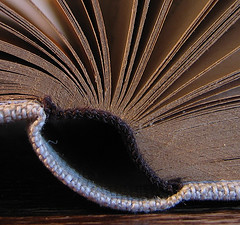A
few weeks ago I created a post regarding Shawn Glover’s Drawbridge photos, but I was drawn to Shawn’s work with ‘now and then’ of San Francisco "The Earthquake blend". The colour photographs of modern-day scenes in the city contrast with the black-and-white images of destruction – buildings half-collapsed, damaged roads revealing yawning subterranean pits, facades blackened, trolleys smashed. Shawn has painstakingly researched and constructed images reminiscent of Sergey Larenkov’s “Ghosts of WWII series (see my
‘Penetrating the layers of time’ post).
To put these photos together, Shawn created a catalogue
of historical photos that looked to have potential to be blended.
“Unfortunately most of these photos end up on the digital cutting room floor
because there’s simply no way to get the same photo today because either a building
or a tree is in the way. Once I get a good location, I get everything lined up
just right. My goal is to stand in the exact spot where the original
photographer stood. Doing this needs to take into account equivalent focal
length, how the lens was shifted, light conditions, etc. I take plenty of
shots, each nudged around a bit at each location. Just moving one foot to the
left changes everything.” His original idea was to tear away a piece of the
modern photo to expose the 1906 photo, but after playing around a bit,
everything seemed more interesting when the two were softly blended together.
Shawn
kept running into delays. In the case of the Valencia St. Hotel, he had to
return to the scene on Valencia Street four times before managing to get it
right. There’s quite a bit of conflicting information of exactly where this
building once stood.
A
variety of photos taken from April 18, 1906 to 1907 of the devastation of San
Francisco’s 1906 earthquake, that give a well-rounded depiction of the city at
the time. Luckily photography was a common hobby by 1906 and thousands of
photos have survived to this day.
The San
Francisco earthquake struck on April 18th 1906 with 42 seconds of
intense shaking estimated at 7.8 on the Richter scale.
Buildings fell, sinkholes in the streets opened up, the ground liquefied, railroad
tracks bent, and collapsing bricks crushed cable cars. However, it was the
out-of-control fires that did 90% of the destruction. Over 30 fires, caused by
ruptured gas mains, destroyed approximately 25,000 buildings on 490 city
blocks, many fires were started when firefighters used dynamite to demolish
buildings to create firebreaks, which resulted in the destruction of more than
50% of the buildings that would have otherwise survived. The fires burned for
four days and nights.
The city was in disarray. Federal troops and police had orders to shoot and kill looters. Thousands of tents and temporary relief houses went up to house the 20,000 displaced people.
A cable car heads towards the California Street incline while shocked residents walk aimlessly through street amidst the devastation. The tower in the background belongs to the Old St Marys Church, which survived the quake but was gutted by fire. It was rebuilt and still stands at the corner of California Street and Grant Avenue.
People cross Market Street in front of the destroyed Hearst Building. The building caught fire at noon on the 18th, and the front wall facade was all that remained standing. The dynamiting of buildings started at 2.30pm.
Pedestrians
cross Jones St towards a pile of rubble on Market Street. The Hibernia Bank
building on the McAllister Street corner is burned out, but still standing
strong. It was repaired and temporarily housed the Harbour Police after the
quake. It was restored to bank use, then again became a police substation when
the Hibernia Bank closed in the late 1980s.
A woman opens the door to her Mercedes in the fish wholesaler’s district on Sacramento Street while horses killed by falling rubble lie in the street. After the original photo was taken, the entire area was burned out.
Two girls
stand before the partially destroyed Sharon Building in Golden Gate Park. Built
in 1888, the Romanesque sandstone building was a canteen for children visiting
the park. It was damaged by fire in 1974, and is now an art studio.
Cars travel down S. Van Ness, which has buckled after the quake. The fires reached Van Ness Avenue on the 20th
A bicyclist rides towards the fallen Valencia Street Hotel and a huge sinkhole that has opened up in the street. The hotel on the west side of Valencia Street between 18th & 19th Streets sank one storey into the sinkhole, which was a filled-in swamp known as Lake Coppin. Up to 200 people may have died in the hotel, many drowned as a major water-main broke as the hotel sank.
.
.
People
walk up California Street amid charred scraps of lumber. The dark bricks of the
Old St Marys tower is visible behind the modern day woman.
People
stroll by the original adobe Mission Dolores which survived, while the brick Gothic
Revival church (built 1876) next door was destroyed. The Mission District is up
the hill and the fires reached there on the 21st. The Notre Dame
Convent across the road was dynamited, but the fire jumped the road to the
church and damaged to the extent it was razed. The fire was halted almost on
the Mission doorstep. Dedicated in 1791 the Mission Dolores is now the oldest
surviving structure in San Francisco. A new grand basilica was built on the
church site in 1913-18.
.
.
Horse
carriages and cars park in front of Lafayette Park while a destroyed city looms
in the background. Lafayette Park encompasses a four-block area
bounded by Sacramento Street to the south, Laguna Street to the west,
Washington Street to the north, and Gough Street to the east. More than half
the city was homeless, and 11 relief camps were set up in public parks.















No comments:
Post a Comment